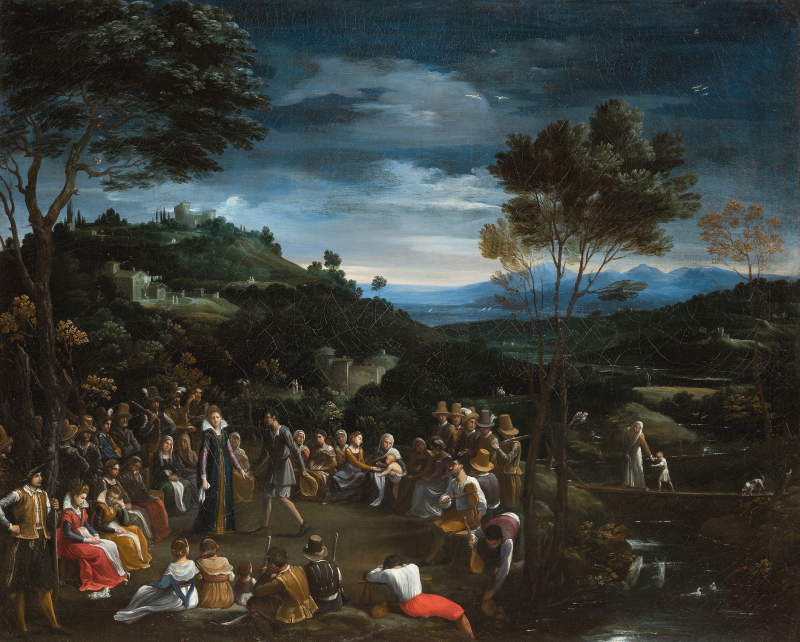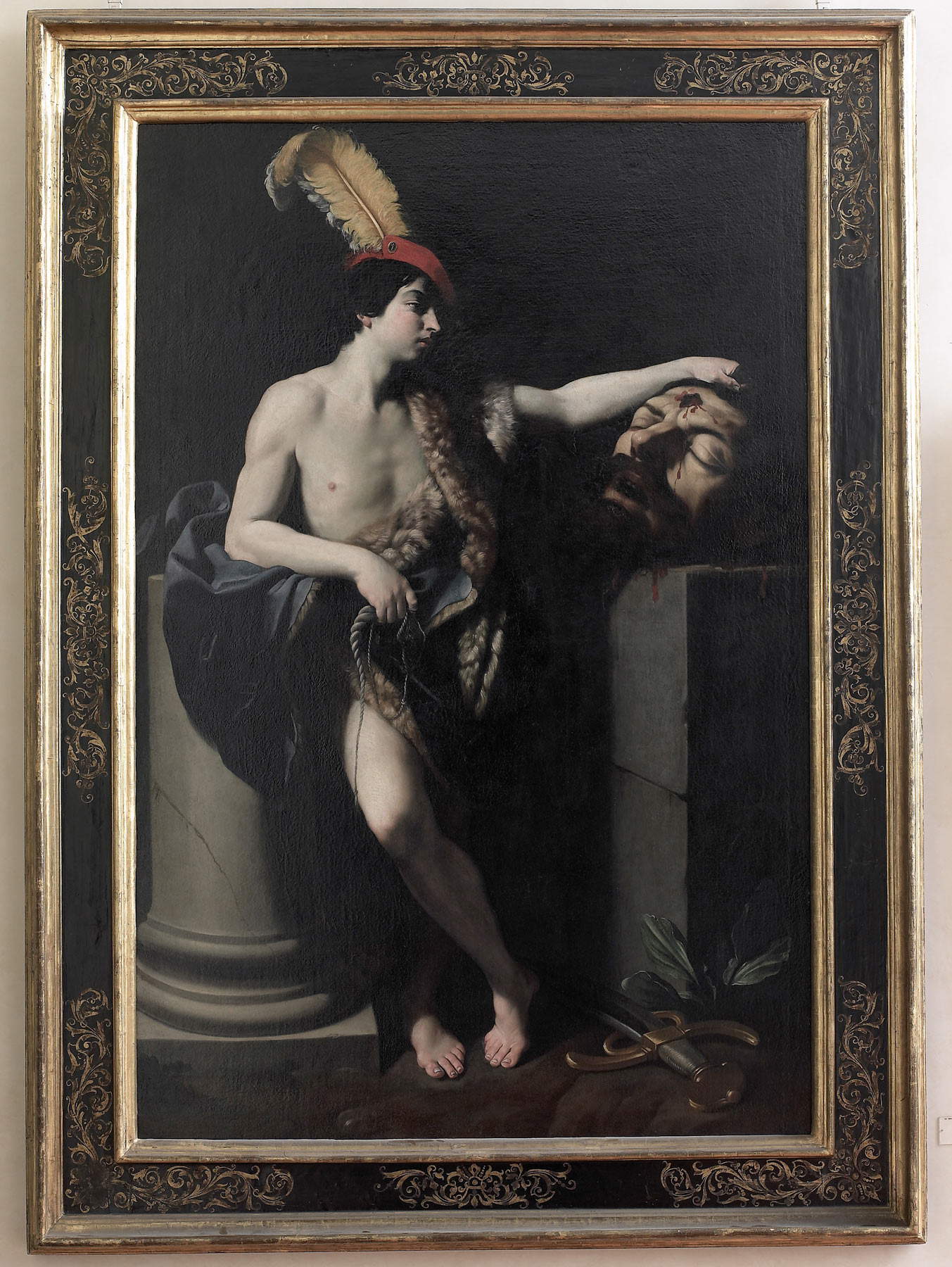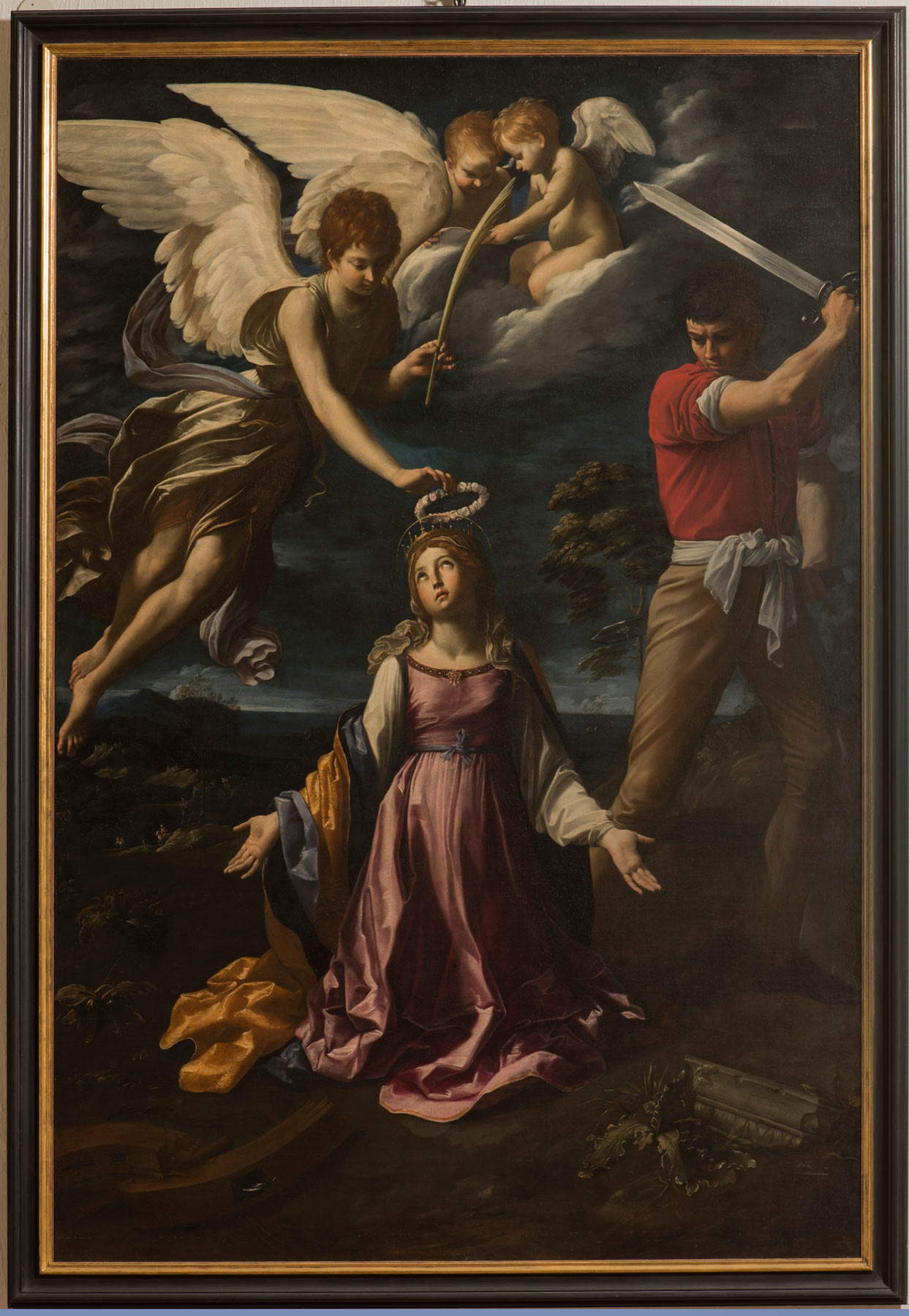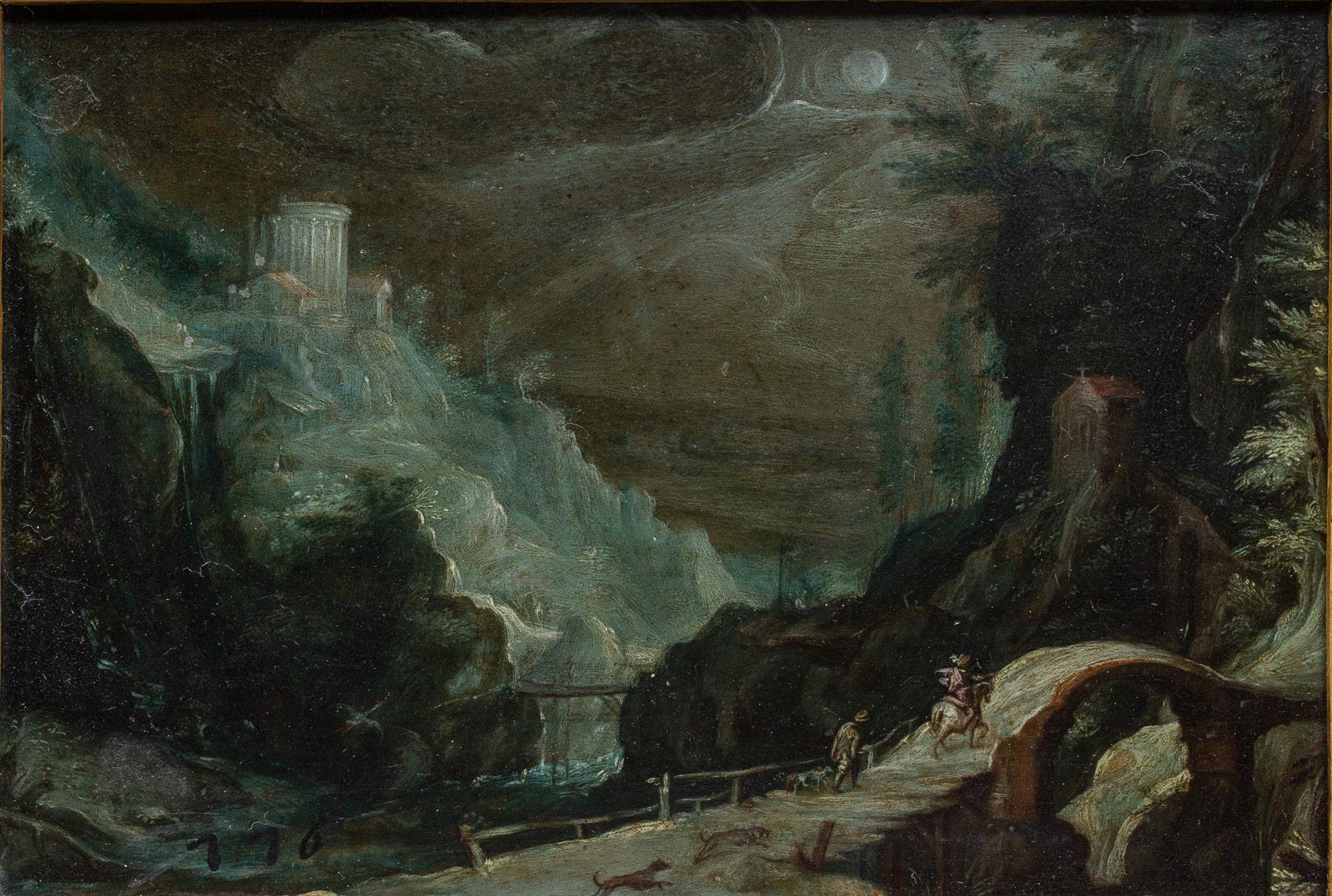Held from March 1 to May 22, 2022, at the Galleria Borghese in Rome, the exhibition Guido Reni in Rome. The Sacred and Nature, curated by Francesca Cappelletti, director of the museum who had long announced this exhibition. The exhibition is an opportunity to present the museum’s new acquisition, Guido Reni’s Country Dance, which was thought to be missing, and to compose a review on Guido Reni (Bologna, 1575 - 1642) more than 30 years after the last major Italian exhibition, the first in a series of international exhibitions dedicated to the Italian seventeenth-century master.
The exhibition, as mentioned, revolves around the rediscovered painting, the Country Dance from around 1605, which has been back in the museum’s collection for a year. Belonging to the collection of Cardinal Scipione Borghese, mentioned in ancient inventories since the early seventeenth century, sold in the nineteenth century, first dispersed, and then reappeared in 2008 on the London antiquities market as an anonymous Bolognese, the painting, after appropriate attributional verifications, was repurchased by the Gallery in 2020. In addition to representing an important historical addition to the museum’s holdings, its presence in the rooms of the picture gallery alongside the other paintings in the collection underscores the fundamental importance of the Borghese commission for the great Bolognese artist and offers an opportunity to reflect on the painter’s relationship with rural subjects and landscape painting, hitherto considered “foreign” to his production.
More than 30 works are on display: Guido Reni ’s Goal in Rome. The Sacred and Nature is to try to reconstruct, starting from Reni’s interest in landscape painting in relation to other painters working in Rome in the early 17th century, the early years of the artist’s stay in Rome, his passionate study of antiquity and the Renaissance, his stunner with respect to the painting of Caravaggio whom he knew and frequented, and his relationships with his patrons.
The exhibition is accompanied by a catalog published by Marsilio with texts by Daniele Benati, Raffaella Morselli and Maria Cristina Terzaghi, among others, and a reinterpretation of the master’s work (“innovative,” the museum promises) through a scientific study of Guido Reni as a landscape painter. Finally, with the desire to allow the greatest possible access to the exhibition and to support cultural consumption, the management of the Galleria Borghese has chosen not to apply the usual surcharges on the cost of the ticket, which will therefore remain unchanged and allow access to the exhibition and the permanent collection.



The exhibition itinerary opens on the ground floor in the large entrance hall with four monumental altarpieces (the Crucifixion of St. Peter from 1604-1605, the Trinity with the Madonna of Loreto and the commissioner Cardinal Antonio Maria Gallo from about 1603-1604, the Martyrdom of St. Catherine of Alexandria from about 1606, and the Martyrdom of St. Cecilia from 1601) that are intended to highlight the ability of the artist, already matured in the years before his arrival in Rome, to confront this type, to touch the souls through the solemnity and power of his perfect figures, and also reveal much about Reni’s relationship with his patrons: Paolo Emilio Sfondrato, Antonio Maria Gallo, Ottavio Costa and Pietro Aldobrandini. In the adjoining rooms, works such as the Strage degli Innocenti (1611) and San Paolo rimprovera San Pietro penitente (c. 1609) confirm how at the basis of Guido Reni’s Roman painting, but also of that which went a little further years such as with Lot and Daughters and Atalanta and Ippomene (1615-1620), there is a strong attraction to the sculptors’ craft, demonstrated by the position of the bodies in space, the three-dimensional concreteness of the gestures, and the expressions on the faces that masterfully fix a specific emotion forever.
On the second floor, in the second part of the exhibition, paths and digressions around the theme of landscape and the collection’s latest acquisition, the Country Dance, depart: In the Lanfranco Room, to highlight the practice of landscape painting in Rome in the first decade of the seventeenth century, some of the necessary Emilian premises are exhibited, from the Landscape with Deer Hunt by Niccolò dell’Abate to Agostino Carracci’s Festa campestre (1584), some paintings by Paul Bril that are part of the Gallery’s collection, Landscape with Abandoned Ariadne and Landscape with Salmace and Hermaphrodite (c. 1606-1608), two of the six landscapes with mythological stories by Carlo Saraceni, formerly part of the Farnese collection, from the Museo e Real Bosco of Capodimonte. And again some late and literary experiments by Bolognese painters, from Francesco Albani ’s four tondi (landscapes executed in 1621 for Scipione Borghese and inhabited by goddesses and nymphs) to Domenichino ’s Landscape with Silvia and Satyr (1615) from the Pinacoteca di Bologna, evidence of an interest that continued in the decades following those first intense moments of the century. The journey between Guido Reni and his contemporaries, between landscape and figure, ends in Rome with the fresco executed between 1613 and 1614 in the casino of Cardinal Scipione Borghese, now Pallavicini Rospigliosi. Between the frescoes by Paul Brill and Antonio Tempesta, Reni imagines the rising of the Sun, surrounded by the Hours and preceded by Aurora, leaving a glimpse in the background of a seascape that takes us back to the Danza campestre, now returned to the mansion that was once Scipione Borghese’s and with which the exhibition concludes. The fresco, one of the artist’s greatest masterpieces, ideally represents the end of the painter’s fruitful but tormented relationship with the Borghese family, and of his first, fundamental stay in Rome.



In Rome, a city of comparison and challenge for artists, the young Guido Reni arrived in the early seventeenth century, probably invited by Cardinal Paolo Emilio Sfondrato, whom he had met in Bologna in 1598. The latter, a nephew of Pope Gregory XIV, visited the Emilia capital in the retinue of Clement VIII and came into contact with Reni, from whom he asked for a copy ofRaphael’s Ecstasy of Saint Cecilia. This version, which arrived in the city, anticipated the arrival of its author, who remained there, with frequent interruptions, until 1614. A stay marked at first by a series of works with religious subjects, some executed on behalf of Cardinal Sfondrato who, in 1608, sold part of his collection to Scipione Borghese.
To 1604 dates the Crucifixion of St. Peter, which marks a moment of close comparison with Caravaggio and ardent youthful experimentation. The canvas, commissioned by Cardinal Pietro Aldobrandini for the Abbey of St. Paul at the Three Fountains, along with other works such as David with the Head of Goliath (1605) reveals Reni’s attention not only to Caravaggio but also to the manners of other contemporary artists, which reworked would lead to his singular and admired manner of painting, in which Caravaggesque dramatic chiaroscuro is grafted onto the lesson of Ludovico Carracci. Another crucial moment of the Roman sojourn, highlighted by the exhibition, is the relationship woven with the Genoese banker Ottavio Costa, a collector and patron who played a key role in Rome, not least because of the unscrupulous use of the copies he had made from his paintings, such as Caravaggio’s Saint Francis in Ecstasy and Saint John the Baptist. The names of Reni and Caravaggio are found paired, along with that of Annibale Carracci, in Costa’s papers, and they return in the considerations of other figures of importance to the cultural history of this extraordinary period, such as Marquis Vincenzo Giustiniani.




 |
| Rome, at the Borghese Gallery an exhibition on Guido Reni, the first in 30 years |
Warning: the translation into English of the original Italian article was created using automatic tools. We undertake to review all articles, but we do not guarantee the total absence of inaccuracies in the translation due to the program. You can find the original by clicking on the ITA button. If you find any mistake,please contact us.